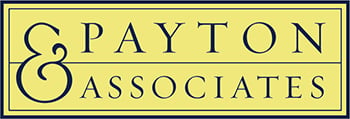If you were in a deposition right now, with your hands folded on top of the table in front of you, with your watch covered by your shirtsleeve and were asked “Do you know what time it is?” do you know the correct way to respond? You stretch out your arm to which your watch is clasped and say “It is 3:05 p.m.” That is not the way to respond. The responsive answer is either “I do know what time it is” or “I do not know what time it is.” This example helps to explain the technique of controlling the too talkative witness, your too talkative witness.
How many times have you run across a witness who cannot stop talking? Whether it is a product of intelligence, ego, insecurity or social norms, you know from experience that nothing good is going to come from this witness’s mouth . You can instruct the witness to keep his answers short, not to volunteer information and just be responsive to the question. All of that falls on deaf ears . The reason it falls on deaf ears is because the witness has been talking like that since he was old enough to put more than two sentences together.
So, you scratch your head and realize prayer is not going to help you or the witness. The written instructions on how a witness is to conduct himself in a deposition haven’t worked so far. You wonder if there is any salvation from this nightmare of a witness sitting across the table from you. All is not lost. There is a technique that can be taught, even to your talkative witness. The technique is called “wrapping the answer around the question.” That’s a strange name for a technique, but it describes exactly what you want to teach your overly verbose witness.
The technique involves what its name implies—wrapping the answer around the question. It makes the question the core of every answer if the technique is properly used. Go back to the example at the beginning of this piece. The question is asked “Do you know what time it is?” The witness’s shirtsleeve hides his watch and there is no timepiece on the wall facing him. His answer is “I do not know what time it is.” He wrapped his answer around the question and then shut up . The witness is shown an exhibit. Normally this witness would start blathering about the history of the document and all sort of irrelevant mouthings that always place his testimony at risk. The question is asked, “Have you ever seen that document before?’ The answer is simple. “I have seen that document before,” or “I have not seen that document before.”
The witness is in control of the deposition. He answers at his own speed. He provides no information beyond what is being asked by the examiner. The witness is employing a technique that allows him time to think of just how he is going to wrap his answer around the question. A well-framed answer precludes volunteering unasked information. A question that is beyond the witness’s knowledge causes bells to go off and ordinarily generates a response such as “I cannot answer your question.” The reason usually given is because the examiner’s facts are outside the knowledge of the witness.
Visualize a boomerang. You throw it out, and if your technique is correct, it will come right back. That is the idea of wrapping the answer around the question. The examiner asks the question; the witness, at the pivot point of the boomerang, turns the question back to the examiner with the answer wrapped around it.
It takes a little time to get used to this technique because ordinary people do not speak in such a structured manner in everyday conversation. But depositions are not everyday conversations. It is said that you do not win cases on deposition, but you do lose them. (That’s a conundrum I have never figured out). I do know the merits of it, however. In order for the witness to be comfortable using the technique, he has to practice. Trying the technique on a spouse is one way to practice. I cannot speak to the result of those I have taught the technique, but no one told me it caused their divorce. Of course, I would expect they would cease using the technique when the deposition concluded.
The downside of this technique is that after a while it might sound canned. That may be. But, if the choice is between testimony that might sound canned and a run away witness, I prefer the former. I have had a judge say after two hours of a witness’s excellent testimony using the technique: “Mr. Smith, you do not have to repeat every question.” To that I responded: “Your Honor, the witness is obligated to tell the truth and provide an answer responsive to the question, and he has done that.” That was the end of the matter and we moved on.
P.S. I learned about the technique when the most critical witness in my case was subpoenaed to testify. I was fearful his testimony would destroy a very significant settlement agreement that was pending between the parties litigant. I hired a communications professor from the University of Miami, and we instructed the witness and then videotaped him in action—before and after. The results were dramatic. The witness came through like a charm and the settlement agreement was successfully concluded.

